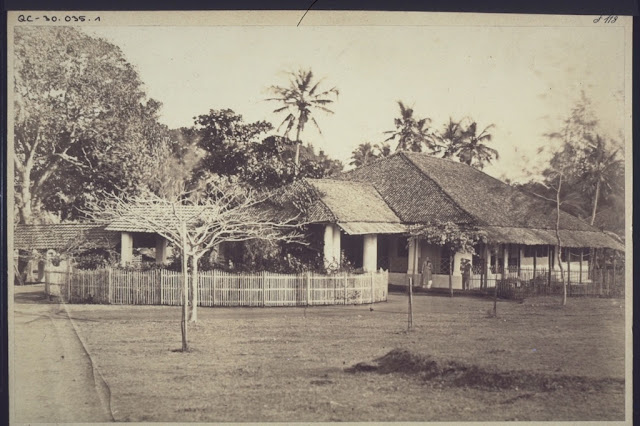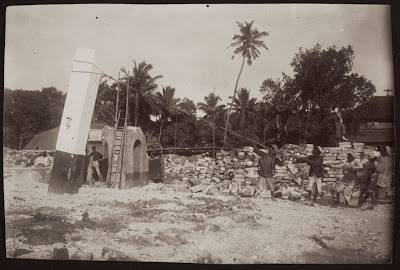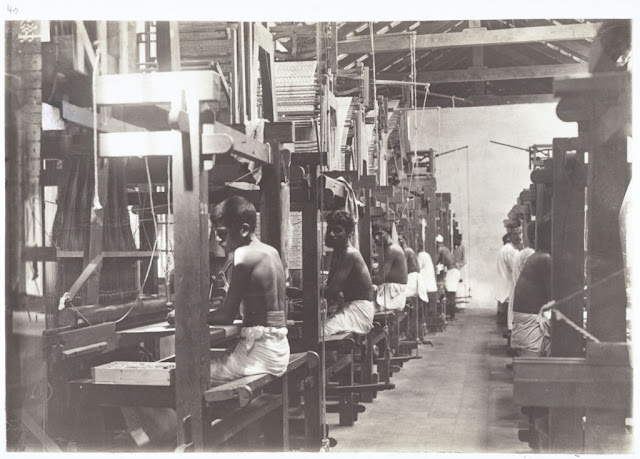
The Signal Tower- 1603
One of the landmarks of medieval Fort Kochi, under Portuguese's Fort Kochi, it remained in glory, until the late days of the 1890s
The lighthouse in Cotschi (Kochi )
Year :1850-97
Photographer :Unknown
The place is now Overgrown with a banyan tree. Near to south side of present Nehru Children Park,Fort Kochi.
The Signal tower stood in center of current Nehru Park, which was the Main square of Fort Kochi in medieval days.
It was a busy signal tower as it communicated with the approaching ships and sent out signals locally too. A basket, a cage, flags, torchlight were all used as signals. A signal was put up when a ship laden with goods was coming. With it the locals knew what was required to board the ship. If coir was to be shipped out they got busy assembling the produce.
Likewise for pepper and other spices. It signalled to fishermen about inclement weather or about sickness on board, a passing or approaching ship. This signal tower was brought down and the remains were razed completely much later when the foundation of the park was laid. The three buildings seen in the painting were the port office, the gear shed and the coal shed. In fact, the Chinese fishing net next to the coal shed is called `Karipura'. Opposite the tower was the Old Harbour Hotel, which housed sailors, and officers who alighted. As the signal station had a tower the road was named Tower Road and remains so till today."
Interesting is the story of the Santa Cruz Basilica which stood behind the present day Laurel Club, one of the three structures seen at the far end of the painting. When the Dutch took over they converted the Basilica into a godown as they were Calvinists. Later, when the British arrived they had to shoot down the godown because the Dutch offered resistance.
The relics, in the form of pillars of the basilica, are found at three places in Fort Kochi. The signal station was the focus of all action, during war and peace. It signalled the coming and the going of traders, merchants and colonisers.
The signal station is no more. At the children's park where it once stood, kids play on swings and slides, their laughter filling the air. Fairy lights and fountains come alive in the evenings; hawkers sell, travellers walk around. There is a strange serenity around this rain tree-lined park.
Quite a contrast, for it was here mutinies rose and fell, fearful exchange of fire shots resounded; the troops marched; merchandise was bartered. It was here that an unseen filtering of culture took place many, many years ago. Now all that exists as memory of this landmark is this forgotten painting on the wall of the Corporation office.
Year :1850-97
Photographer :Unknown
The place is now Overgrown with a banyan tree. Near to south side of present Nehru Children Park,Fort Kochi.
The Signal tower stood in center of current Nehru Park, which was the Main square of Fort Kochi in medieval days.
It was a busy signal tower as it communicated with the approaching ships and sent out signals locally too. A basket, a cage, flags, torchlight were all used as signals. A signal was put up when a ship laden with goods was coming. With it the locals knew what was required to board the ship. If coir was to be shipped out they got busy assembling the produce.
Likewise for pepper and other spices. It signalled to fishermen about inclement weather or about sickness on board, a passing or approaching ship. This signal tower was brought down and the remains were razed completely much later when the foundation of the park was laid. The three buildings seen in the painting were the port office, the gear shed and the coal shed. In fact, the Chinese fishing net next to the coal shed is called `Karipura'. Opposite the tower was the Old Harbour Hotel, which housed sailors, and officers who alighted. As the signal station had a tower the road was named Tower Road and remains so till today."
Interesting is the story of the Santa Cruz Basilica which stood behind the present day Laurel Club, one of the three structures seen at the far end of the painting. When the Dutch took over they converted the Basilica into a godown as they were Calvinists. Later, when the British arrived they had to shoot down the godown because the Dutch offered resistance.
The relics, in the form of pillars of the basilica, are found at three places in Fort Kochi. The signal station was the focus of all action, during war and peace. It signalled the coming and the going of traders, merchants and colonisers.
The signal station is no more. At the children's park where it once stood, kids play on swings and slides, their laughter filling the air. Fairy lights and fountains come alive in the evenings; hawkers sell, travellers walk around. There is a strange serenity around this rain tree-lined park.
Quite a contrast, for it was here mutinies rose and fell, fearful exchange of fire shots resounded; the troops marched; merchandise was bartered. It was here that an unseen filtering of culture took place many, many years ago. Now all that exists as memory of this landmark is this forgotten painting on the wall of the Corporation office.
__________________
























































